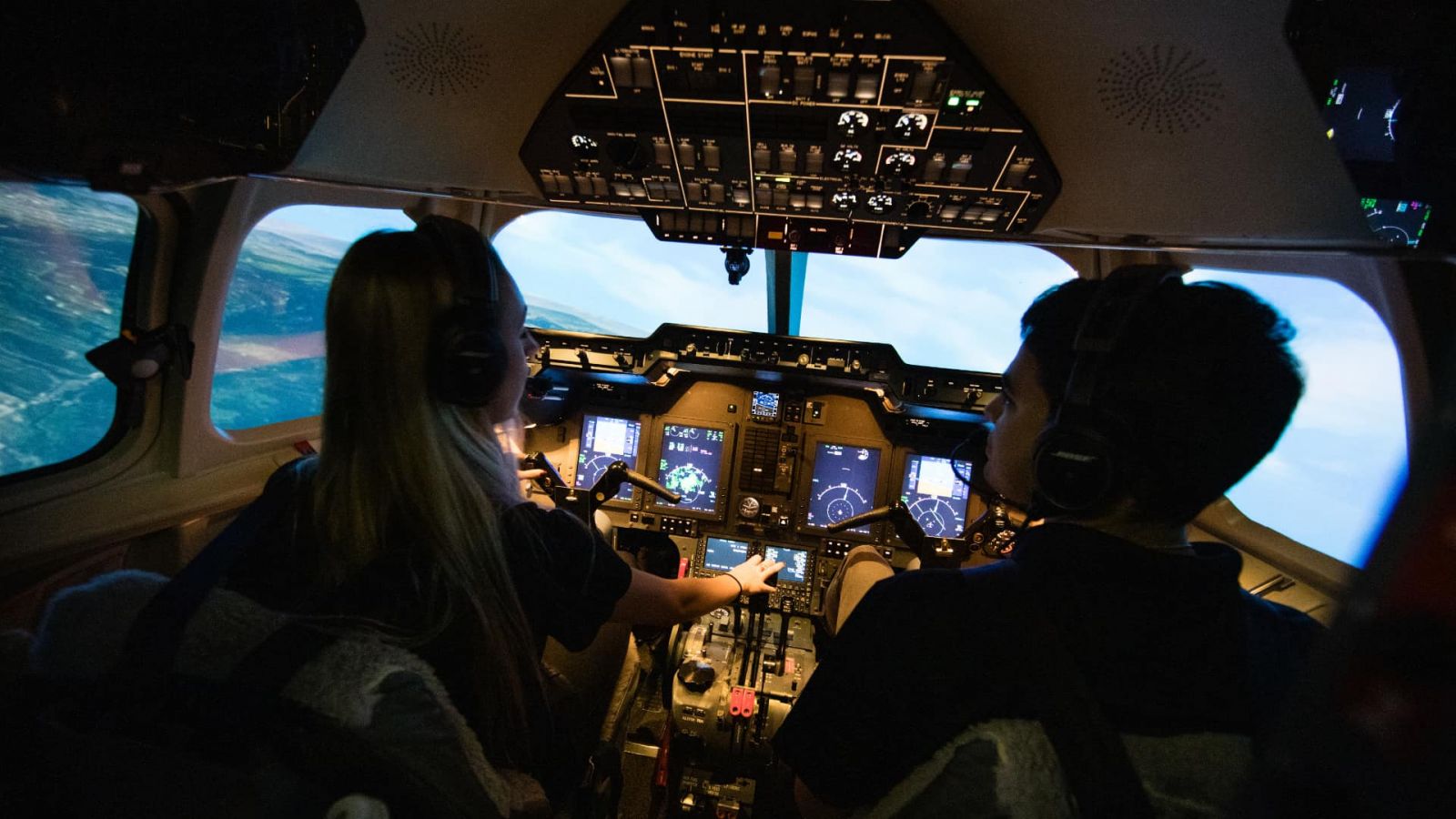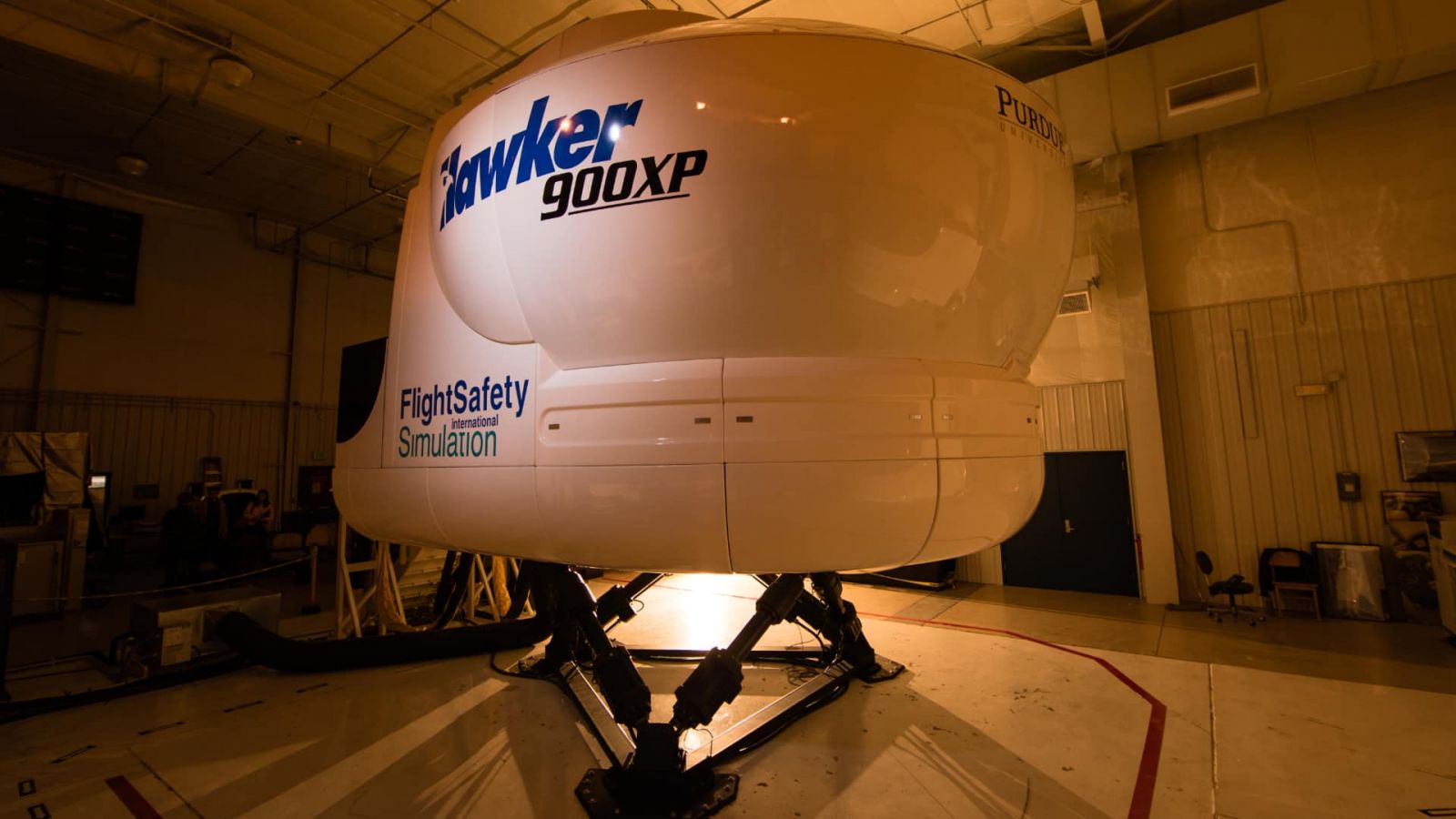
To help find the 800,000 new pilots that the aviation industry will need in the next 20 years, schools with professional flight programs may need high-tech training systems and partnerships with aircraft manufacturers, according to Jason Cutter, assistant professor of aviation technology.
“The industry as a whole is still training pilots the way that we have for decades, even though the technology of the aircraft is continuing to advance," Cutter said. "We’re flying the airplanes very differently, but we’re still stuck in the generation one, generation two training methodology, as we prepare them to fly generation four, generation five airplanes.”
Purdue Polytechnic’s School of Aviation and Transportation Technology has several modern flight simulators, including the Hawker 900XP, a full-motion, Level D simulator, as well as Airbus A320 and Boeing 737 simulators. Cutter said tools like these are essential to keep the next generation of pilots conversant with technology.
Partnerships with aircraft manufacturers might also prove beneficial, allowing student pilots to test new software in simulators while providing useful data to companies like Boeing.
“We do have a pretty strong relationship with Boeing right now, and the relationship’s been building over the past several years," Cutter says. "So we are in talks about how we can do some research that’s going to not only benefit them, but the industry as a whole.”
See the full WBAA News article.

